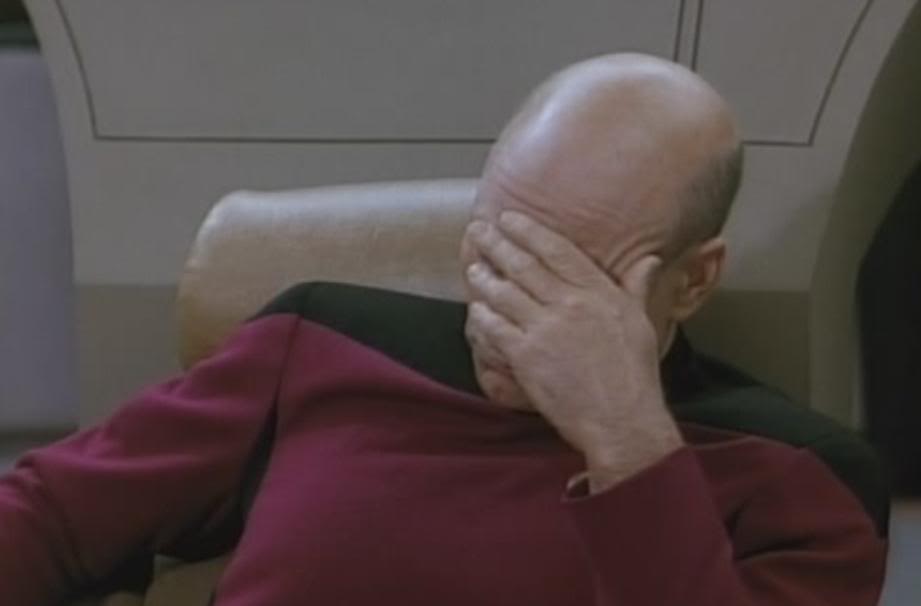No. It is equal to “if not B, then not A.” You’re welcome for doing your logic 101 homework for you.
First thing I thought lmao. Somebody is taking logic
Honestly what the homework is probably looking for is that it’s equivalent to “B or not A.” But yeah.
Edit: I see the error in my below response. I leave wrong answers for conversational completeness
That’s not equivalent either. “if not b, then not a” works if it’s a sequence but doesn’t work for options in which multiple inputs can lead to the same output. If you get pizza every Tuesday and Friday, then answering “what’s for lunch” with “if Tuesday, then pizza” and “if Friday, then pizza” doesn’t let it work in reverse. “what day is it” can’t be answered with “if pizza lunch, then Tuesday”
You left out the “not” part - “If not pizza lunch, then not Tuesday” does indeed work.
Ya wrong.
If Tuesday, then pizza. And, if Friday, then pizza.
The contrapositive : if not pizza, then not Tuesday and not Friday.
What day is it? We’re not having pizza. So it’s not Tuesday or Friday.
Google contrapositives then holla back
That’s a key detail I now see
Using standard definitions from propositional logic they are equivalent.
An example of why this is incorrrect.
If a card is the ace of spades, it is black.
A card is black if and only if it is the ace of spades.
There are other conditions under which B (a card is black) can happen, so the second statement is not true.
A conclusion that would be correct is “If a card is not black, it is not the ace of spades.”. The condition is that if A is true B will also always be true, so if B is false we can be sure that A is false as well - i.e. “If not B, not A”.
If Nazi, then fascist = true
Fascist, if and only Nazi = not true
If car, then vehicle = true
Vehicle if and only if car = not true
If car, then vehicle = true
Car if and only if vehicle = true.
Is this correct?
Therefore “If A then B” = “A if and only if B” (or “If B then A” = “B if and only if A”)?
B can still be true when a is false. iff means that b can only be true when a is true.
Also, the equivalent statement is.
vehicle if and only if car.
not
car only if vehicle
since a truck is a vehicle, the statement is false.
Somewhat wrong above:
A B a iff b
T T T
T F F
F T F
F F T
look online for truth tables.
You’d have to firm up your definition of car and vehicle before you could decide that one. Does a hot wheels car count as a car? Does a vehicle have to be large enough to move people or freight?
Don’t confuse this guy with ontological questions.
This is straight truth table level stuff.
You’ve have some examples, but in case they are not clear enough:
If [you have AIDS] then [you are unwell]
[You are unwell] if and only if [you have AIDS]
The first one is not the same as the second. Why? There are plenty of ways to be unwell, without necessary developing AIDS.
The first statement only defines one possible path to B, not all of them.
Not just HIV, but full blown AIDS?
Actually a good example:
- If you have AIDs (A) then you have HIV (B). True
- You have HIV (B) if, and only if, you have AIDS (A). Not true
- If you don’t have HIV (B), then you don’t have AIDs (A). True, and the actual inverse of “If A then B”; which is “If not B, then not A”
It’s important to stress the “full blown” modifier in any example.
No
Is “If B then A” equal to “B if and only if A”?
Also no.
Thanks. Could you possibly elaborate? Why are they not equal?
Substitute common sense terms. If I say “if it is an apple, it is a fruit”, does it then follow that a thing is a fruit if and only if it is an apple? No. Lots of other things are fruit without being an apple.
Better read that one again.
“If B then A” … “B if and only if A”?
If Apple then fruit. Is Apple ONLY if it’s a fruit.
This one actually checks out.
If and only if is a biconditional. “b if and only if a” means “if b then a” AND “b only if a”. B only if A here means “It is an apple only if is a fruit”, in other words, “if it is a fruit, it could only be an apple.” Which ain’t right.
B -> A (if B, then A) (if apple, then fruit, correct)
B <-> A (B if and only if A) (if apple, then fruit, AND if fruit, then apple, incorrect).
Gotcha. I was reading it aloud: “It’s an Apple if and only if it’s a fruit.” which isn’t wrong, but I guess the technical definition of “If and only if” assumes more than the words imply.
No. They are effectively the same statement.
(A <=> B ) = (A=>B AND B=> A)
Wait. If they are effectively the same statement, wouldn’t that mean they ARE equal?
If B then A is the same as if X then Y is the same as if A then B. They are saying it’s the same as the OP. Changing the letters around doesn’t change the meaning since the letters are just placeholders.
Now if you said If A then B AND If B then A as one it wouldn’t be the same because A and B would have to keep the same meaning.
But they switched the order in only the first half of the statement. I don’t know if everyone commenting caught that.
Is “If B then A” equal to “B if and only if A”?
This IS different from the original question.
I mean it is the definition of “if and only if”. And by commutativity we also know that A iff B is equal to B iff A
Oh yeah. I was very confused as to what that meant, but I learned something today.
Yeah if vs iff can be confusing at first. Trying to understand it with normal grammar doesn’t work right. It’s a lot more helpful to grok the symbols and so the truth tables by hand to see how they fit together
Also, Not (A XOR B)
if youre doing homework, i recommend writing out truth tables for the statements and comparing, gives you a bit more insight into the statement truth conditions
If A, then B
If Not B, then Not A
If it’s raining then the grass is wet, but you can’t tell if it’s raining if the grass is wet, because of say, a hose or sprinkler.
All that you can tell is that if the grass is dry, then it is not raining, and I that’s called a contrapositive.
“If X is cat, then X is mammal” =?> “X is mammal if and only if X is cat”
Obviously doesn’t hold: What if X doge?
Great analogy!
if I brake, my Car will stop.
will my Car only stop if i brake?
Brake*
shhhhhhh. Nobody saw, nobody knows.
Also It’s 00:30 over here, cut me some Slack.
I just saw a video on all the logical fallacies that exist, and this was one of them but my shit-ass memory can’t recall what the name of the fallacy was.
It’s Cunningham’s Fallacy.
I think it’s affirming the consequent
Can you send me the video?
A => B is not the same as B <=> A
No.
B iff A is defined as “If B then A and if A then B”.
If that doesn’t make it clear enough for you, then try writing out the truth table for both statements.
I think I understand now, but what has left me scratching my nose (metaphorically):
Why is it called “B if and only if A”, if what it really means is “B only if A and vice versa”? (Am I correct in thinking that’s what it means?)
I just don’t understand how that translates grammatically. To me, “B if and only if A” sounds the same as “B only if A”. I can accept that they mean different things in the context of logic, just like I can assign any meaning to any label, like I could say that “dog” now means “kite” in a certain context. But it seems unintuitive and doesn’t really make sense to me. Does that make sense?
“B if and only if A” is a shorthand way to write “B if A and B only if A”. It’s like how “He is young and thin” means “He is young and he is thin”. We could write it the second way without trouble, but the first way is shorter, we agree that they mean the same thing, and we prefer to conserve energy when writing.
The form “if and only if” is merely a convenient shorthand. Shorthand is usually more convenient for the writer than for the reader. 🤷♂️
Imagine these natural language sentences and analyze how they are different:
- I’ll go outside if it’s not snowing
- I’ll go outside only if it’s not snowing
Hint: what do you do in each case when it’s snowing?
“If A then B” means if A is true, then B is guaranteed to be true. Note that if B is true and A is false, “if A then B” is still true.
“B only if A” means the only way for B to be true is for A to be true. It’s weird, but it has the inverse truth table as “(not A) and B”.
NP = Pdeleted by creator








